Chiyue Wei
Helen
Phi: Leveraging Pattern-based Hierarchical Sparsity for High-Efficiency Spiking Neural Networks
May 16, 2025Abstract:Spiking Neural Networks (SNNs) are gaining attention for their energy efficiency and biological plausibility, utilizing 0-1 activation sparsity through spike-driven computation. While existing SNN accelerators exploit this sparsity to skip zero computations, they often overlook the unique distribution patterns inherent in binary activations. In this work, we observe that particular patterns exist in spike activations, which we can utilize to reduce the substantial computation of SNN models. Based on these findings, we propose a novel \textbf{pattern-based hierarchical sparsity} framework, termed \textbf{\textit{Phi}}, to optimize computation. \textit{Phi} introduces a two-level sparsity hierarchy: Level 1 exhibits vector-wise sparsity by representing activations with pre-defined patterns, allowing for offline pre-computation with weights and significantly reducing most runtime computation. Level 2 features element-wise sparsity by complementing the Level 1 matrix, using a highly sparse matrix to further reduce computation while maintaining accuracy. We present an algorithm-hardware co-design approach. Algorithmically, we employ a k-means-based pattern selection method to identify representative patterns and introduce a pattern-aware fine-tuning technique to enhance Level 2 sparsity. Architecturally, we design \textbf{\textit{Phi}}, a dedicated hardware architecture that efficiently processes the two levels of \textit{Phi} sparsity on the fly. Extensive experiments demonstrate that \textit{Phi} achieves a $3.45\times$ speedup and a $4.93\times$ improvement in energy efficiency compared to state-of-the-art SNN accelerators, showcasing the effectiveness of our framework in optimizing SNN computation.
Hamming Attention Distillation: Binarizing Keys and Queries for Efficient Long-Context Transformers
Feb 03, 2025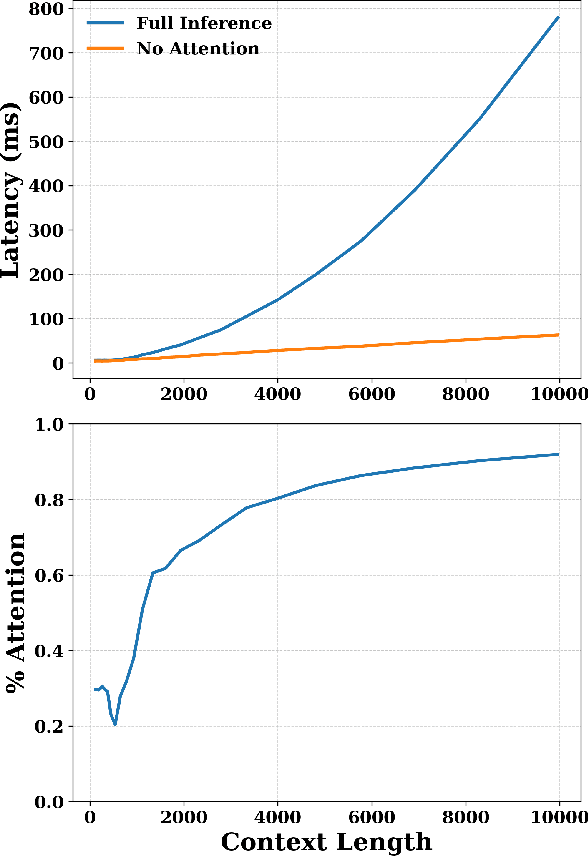

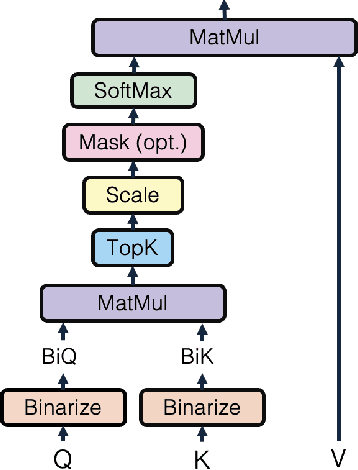
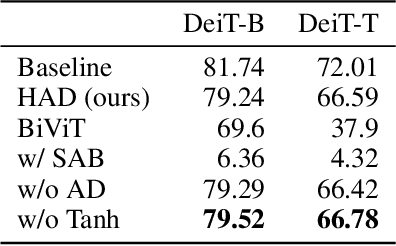
Abstract:Pre-trained transformer models with extended context windows are notoriously expensive to run at scale, often limiting real-world deployment due to their high computational and memory requirements. In this paper, we introduce Hamming Attention Distillation (HAD), a novel framework that binarizes keys and queries in the attention mechanism to achieve significant efficiency gains. By converting keys and queries into {-1, +1} vectors and replacing dot-product operations with efficient Hamming distance computations, our method drastically reduces computational overhead. Additionally, we incorporate attention matrix sparsification to prune low-impact activations, which further reduces the cost of processing long-context sequences. \par Despite these aggressive compression strategies, our distilled approach preserves a high degree of representational power, leading to substantially improved accuracy compared to prior transformer binarization methods. We evaluate HAD on a range of tasks and models, including the GLUE benchmark, ImageNet, and QuALITY, demonstrating state-of-the-art performance among binarized Transformers while drastically reducing the computational costs of long-context inference. \par We implement HAD in custom hardware simulations, demonstrating superior performance characteristics compared to a custom hardware implementation of standard attention. HAD achieves just $\mathbf{1.78}\%$ performance losses on GLUE compared to $9.08\%$ in state-of-the-art binarization work, and $\mathbf{2.5}\%$ performance losses on ImageNet compared to $12.14\%$, all while targeting custom hardware with a $\mathbf{79}\%$ area reduction and $\mathbf{87}\%$ power reduction compared to its standard attention counterpart.
A Survey: Collaborative Hardware and Software Design in the Era of Large Language Models
Oct 08, 2024

Abstract:The rapid development of large language models (LLMs) has significantly transformed the field of artificial intelligence, demonstrating remarkable capabilities in natural language processing and moving towards multi-modal functionality. These models are increasingly integrated into diverse applications, impacting both research and industry. However, their development and deployment present substantial challenges, including the need for extensive computational resources, high energy consumption, and complex software optimizations. Unlike traditional deep learning systems, LLMs require unique optimization strategies for training and inference, focusing on system-level efficiency. This paper surveys hardware and software co-design approaches specifically tailored to address the unique characteristics and constraints of large language models. This survey analyzes the challenges and impacts of LLMs on hardware and algorithm research, exploring algorithm optimization, hardware design, and system-level innovations. It aims to provide a comprehensive understanding of the trade-offs and considerations in LLM-centric computing systems, guiding future advancements in AI. Finally, we summarize the existing efforts in this space and outline future directions toward realizing production-grade co-design methodologies for the next generation of large language models and AI systems.
DeSCo: Towards Generalizable and Scalable Deep Subgraph Counting
Aug 16, 2023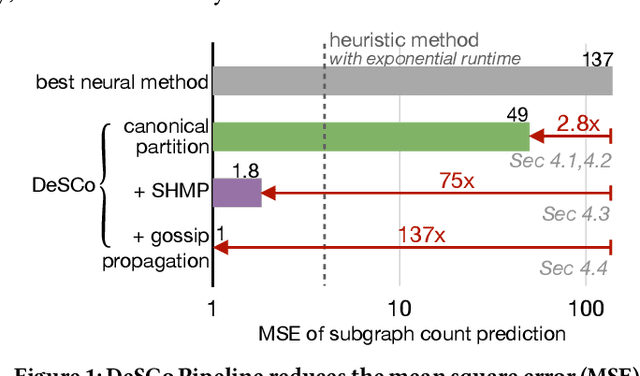
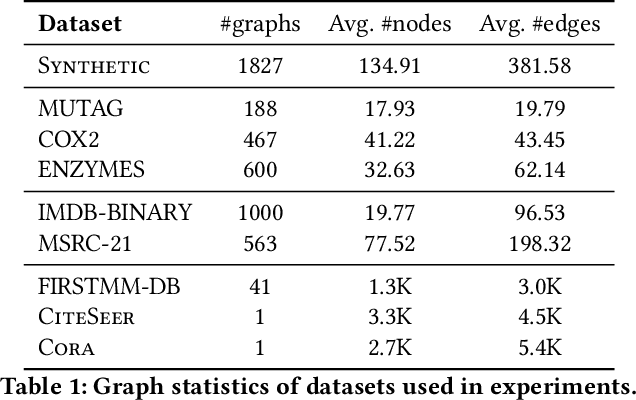
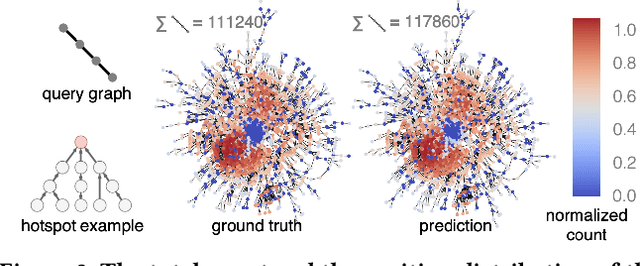
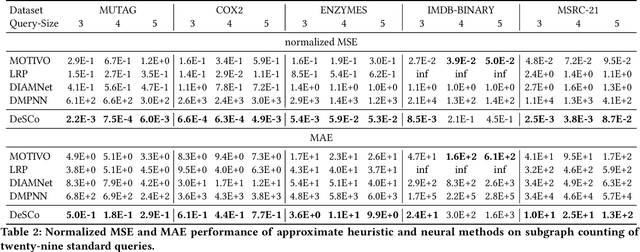
Abstract:Subgraph counting is the problem of counting the occurrences of a given query graph in a large target graph. Large-scale subgraph counting is useful in various domains, such as motif counting for social network analysis and loop counting for money laundering detection on transaction networks. Recently, to address the exponential runtime complexity of scalable subgraph counting, neural methods are proposed. However, existing neural counting approaches fall short in three aspects. Firstly, the counts of the same query can vary from zero to millions on different target graphs, posing a much larger challenge than most graph regression tasks. Secondly, current scalable graph neural networks have limited expressive power and fail to efficiently distinguish graphs in count prediction. Furthermore, existing neural approaches cannot predict the occurrence position of queries in the target graph. Here we design DeSCo, a scalable neural deep subgraph counting pipeline, which aims to accurately predict the query count and occurrence position on any target graph after one-time training. Firstly, DeSCo uses a novel canonical partition and divides the large target graph into small neighborhood graphs. The technique greatly reduces the count variation while guaranteeing no missing or double-counting. Secondly, neighborhood counting uses an expressive subgraph-based heterogeneous graph neural network to accurately perform counting in each neighborhood. Finally, gossip propagation propagates neighborhood counts with learnable gates to harness the inductive biases of motif counts. DeSCo is evaluated on eight real-world datasets from various domains. It outperforms state-of-the-art neural methods with 137x improvement in the mean squared error of count prediction, while maintaining the polynomial runtime complexity.
 Add to Chrome
Add to Chrome Add to Firefox
Add to Firefox Add to Edge
Add to Edge